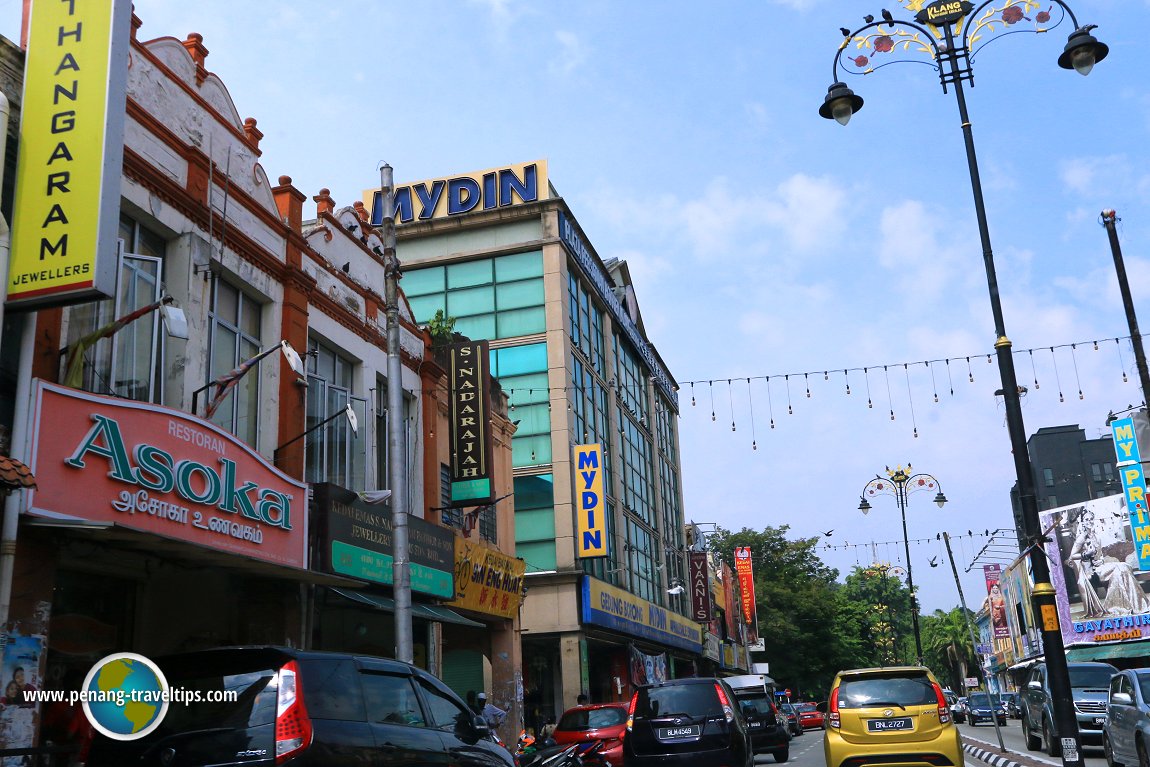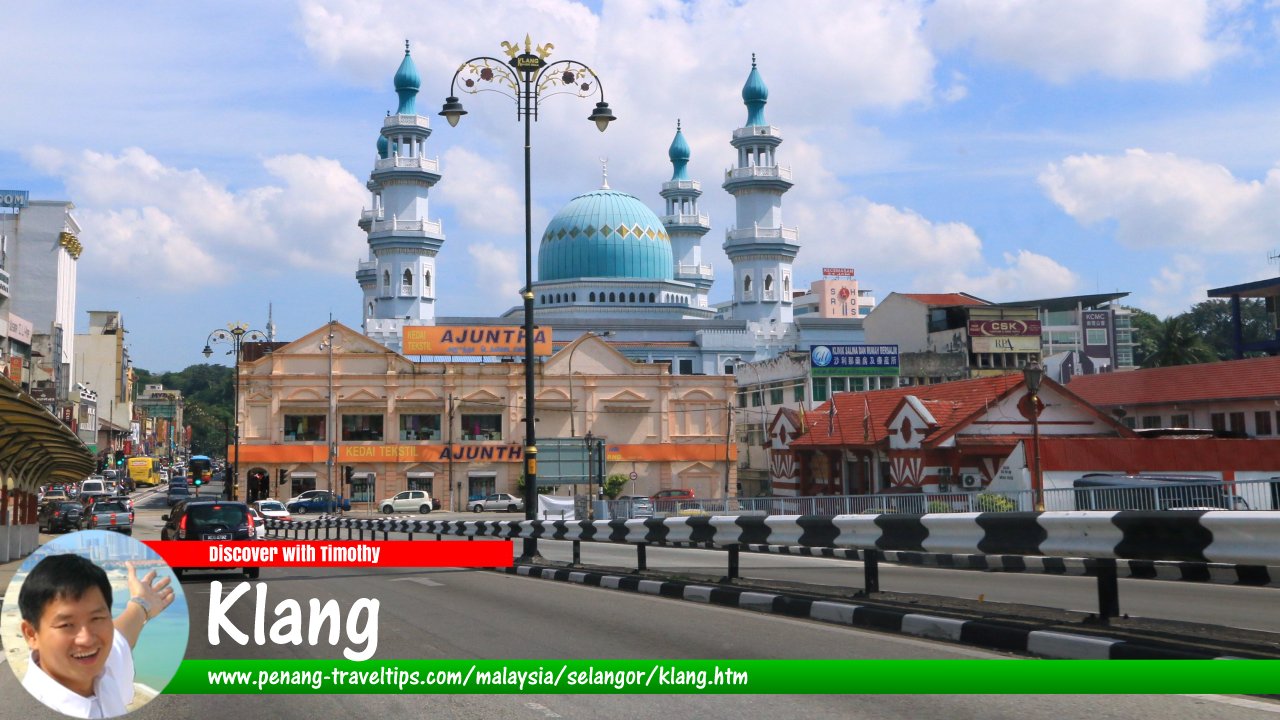 Klang (7 July, 2016)
Klang (7 July, 2016)
B. Melayu
Klang (GPS: 3.04491, 101.44556) is a town on the coast of Selangor. It is located in Klang district, about 6 km east of Port Klang, 10 km from Shah Alam and 32 km west of Kuala Lumpur.
The area around Klang has seen human settlement going back to prehistoric times. The famous 15th Bendahara of Malacca, Tun Perak, hailed from Klang. According to the Klang Municipal Council1, the town has existed since at least 1445, when Bendahara Tun Perak arrived there to be the penghulu, or headman. It is also claimed that the Klang district is older even than Malacca, making it the oldest town in Peninsular Malaysia.
According to local historian Faisal Surani2, the Klang area has been a producer of tin going back to the 14th century, continuing right up to the 20th century.
Klang, as was the rest of Selangor, was controlled by Malacca until the latter fell to the Portuguese in 1511, after which it remain under the control of the Sultan of Johor-Riau, which is also a spin-off from the Malacca Sultanate, until the 18th century, when when present Selangor sultanate, whose rulers are of Bugis descent, came into power.
It was in Klang that Raja Abdullah sent the first batch of Chinese miners up the Klang River to Ampang, which eventually led to the founding of Kuala Lumpur. It was here that the Klang War (also called Selangor Civil War) erupted between Raja Abdullah and Raja Mahdi. The warfare between the two chieftains provided the British an excuse to intervene, and the first British Resident of Selangor was stationed in Klang in 1874.
Until 1874, the capital of Selangor was at Jugra. The British moved it to Klang in 1874, where it remained until 1880, when they moved it once more to Kuala Lumpur. While the capital of Selangor was Kuala Lumpur until 1978 (for four years between 1974 and 1978, Kuala Lumpur acted as capital of Selangor although it was carved out as the Federal Territory). Klang remained as the royal town until the founding of Shah Alam.
As you travel from Kuala Lumpur to Klang, you will notice that the Chinese speak a different dialect. While it is predominantly Cantonese in Kuala Lumpur, the Chinese in Klang speak Klang Hokkien, which is slightly different from the Penang Hokkien. I describe here in more detail about why there are two variants of Hokkien in Malaysia.
The specialty of Klang is Bah Kut Teh, a meal of pork ribs in herbal soup served with rice.
Map of Klang, Selangor
Places of Interest in Klang
- Chong Kong Tong Temple (GPS: 3.05205, 101.44771)

- Gedung Raja Abdullah (GPS: 3.0432, 101.44759)

- Istana Alam Shah (GPS: 3.03581, 101.44874)

- Kota Bridge (GPS: 3.04594, 101.44678)

- Kota Raja Mahdi (GPS: 3.0452, 101.44494)

- Kuan Tien Keng Temple (GPS: 3.0117, 101.41786)

- Kwan Imm Temple (GPS: 3.03748, 101.44253)

- Masjid Bandar Diraja Klang Utara (GPS: 3.04798, 101.44586)

- Masjid India Muslim Tengku Kelana (GPS: 3.04189, 101.44714)

- Sri Nagara Thendayuthapani Temple (GPS: 3.04243, 101.44559)

- St Barnabas Church (GPS: 3.04184, 101.44587)

- Sultan Suleiman Royal Mosque (GPS: 3.03455, 101.45047)

- Tamil Methodist Church Klang (GPS: 3.04161, 101.44648)

Places and neighbourhoods of Klang
Categories of sights in Klang
What to eat in Klang
- Char Koay Teow at Jalan Gelugor, Kawasan 17, 41150 Klang, recommended by Ronald Lee on 27 August, 2019
- Durian at Klang Town Durian Station, Lot 1029, Jalan Pasar, Bandar Klang (beside Masjid Bandar Diraja Malaysia) (GPS: 3.048377, 101.445546), recommended by Ronald Lee on 27 August, 2019
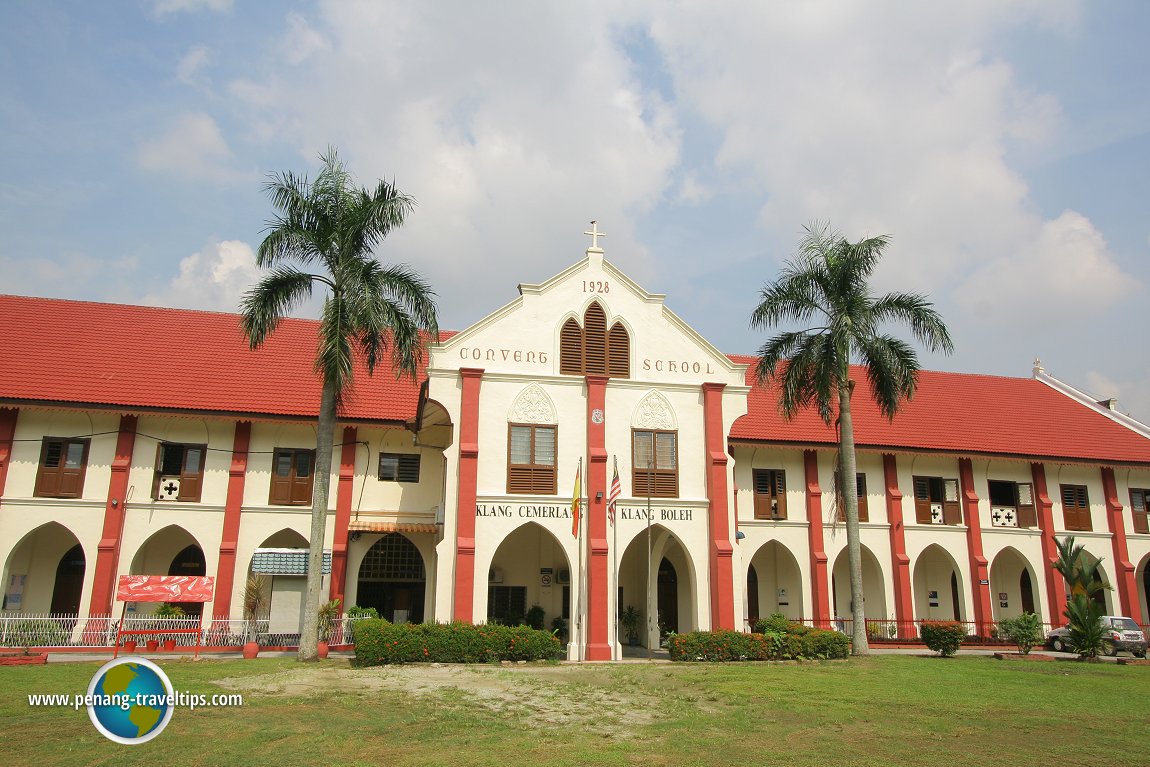 Klang Convent School (29 December, 2006)
Klang Convent School (29 December, 2006)
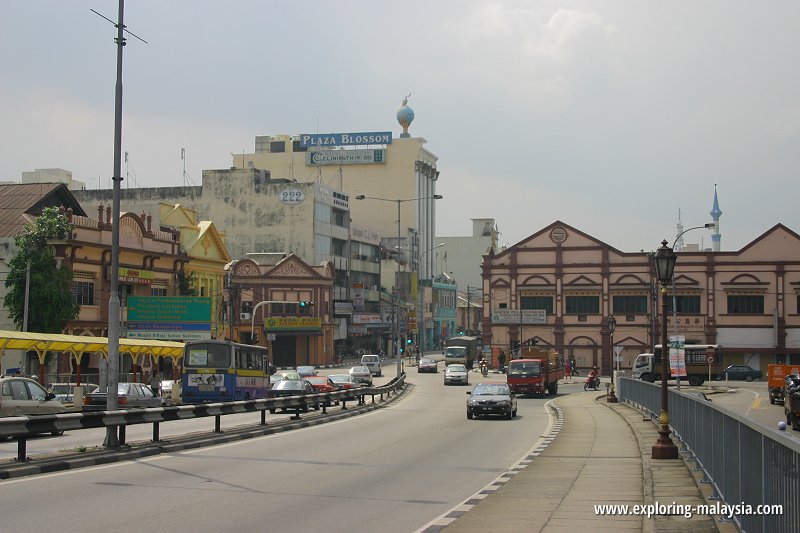 Klang Old Town (29 December, 2006)
Klang Old Town (29 December, 2006)
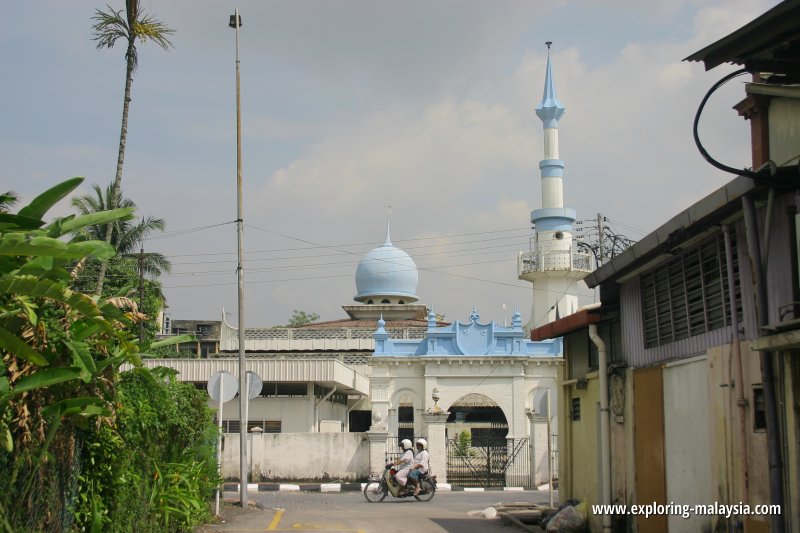 Masjid India, Klang (29 December, 2006)
Masjid India, Klang (29 December, 2006)
What to eat in Klang
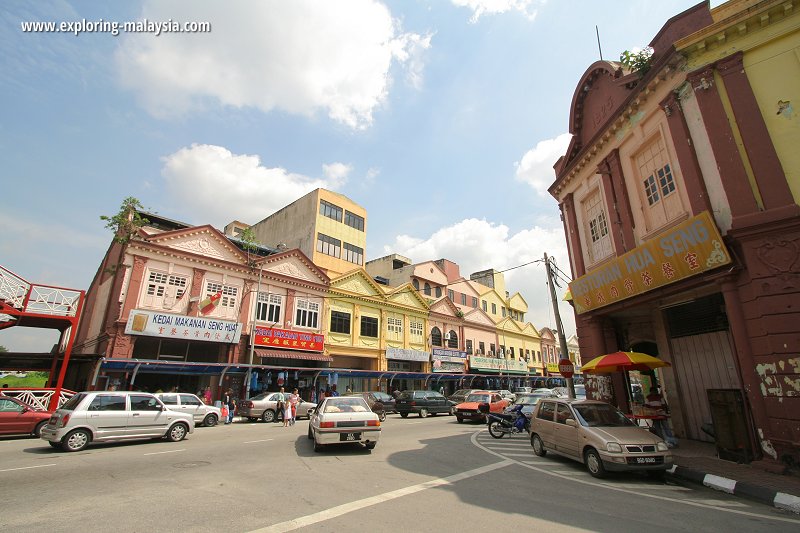 Kedai Makanan Seng Huat, Klang (29 December, 2006)
Kedai Makanan Seng Huat, Klang (29 December, 2006)
If you take pork, the specialty here is the Klang Bak Kut Teh, and the most popular coffee shop selling it is Kedai Makanan Seng Huat, often known as the "bak kut teh under the bridge" because the shop just just beside the bridge that crosses the Klang River. I have eaten here once. Honestly, I didn't find it all that special, but if you are ever in Klang, you might want to give it a try.
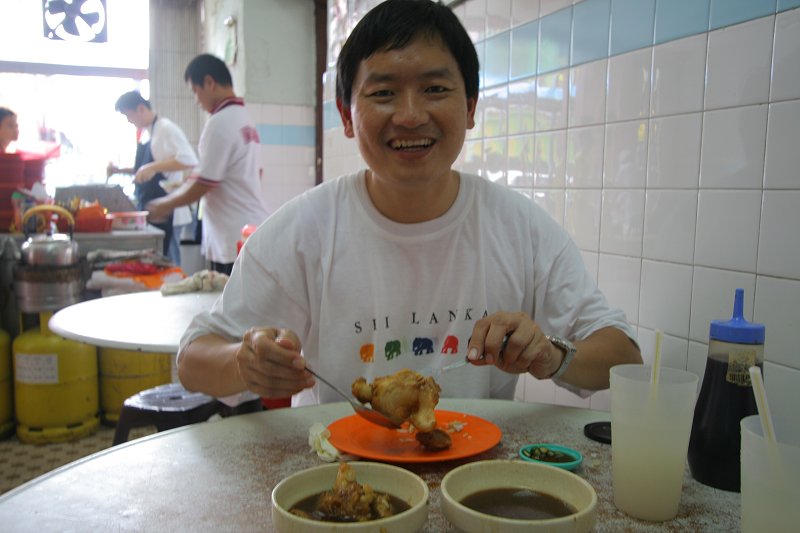 Tim at Kedai Kopi Seng Huat, Klang (29 December, 2006)
Tim at Kedai Kopi Seng Huat, Klang (29 December, 2006)
Getting there
The most straightforward way to reach Klang is to use the Federal Highway which leads to Klang on the way to Port Klang. At the end of the Federal Highway, the same road becomes Persiaran Sultan Ibrahim. Further on, as it approach the town bridge, it becomes Jalan Jambatan Kota. After crossing the bridge, get ready to exit the road to go to Old Klang Town. If you continue on, you will reach Port Klang.Klang is  on the Map of Towns in Selangor
on the Map of Towns in Selangor
References
1. Rentetan Sejarah: Majlis Perbandaran Klang2. Utusan Online: Sejarah panjang Sungai Klang (5 September, 2015)
Back to Discover Selangor; list of Towns in Selangor and Towns in Malaysia
 Latest updates on Penang Travel Tips
Latest updates on Penang Travel Tips
Songs about Penang
About this website

Hello and thanks for reading this page. My name is Timothy and my hobby is in describing places so that I can share the information with the general public. My website has become the go to site for a lot of people including students, teachers, journalists, etc. whenever they seek information on places, particularly those in Malaysia and Singapore. I have been doing this since 5 January 2003, for over twenty years already. You can read about me at Discover Timothy. By now I have compiled information on thousands of places, mostly in Peninsular Malaysia and Singapore, and I continue to add more almost every day. My goal is to describe every street in every town in Malaysia and Singapore.
Copyright © 2003-2024 Timothy Tye. All Rights Reserved.


 Go Back
Go Back